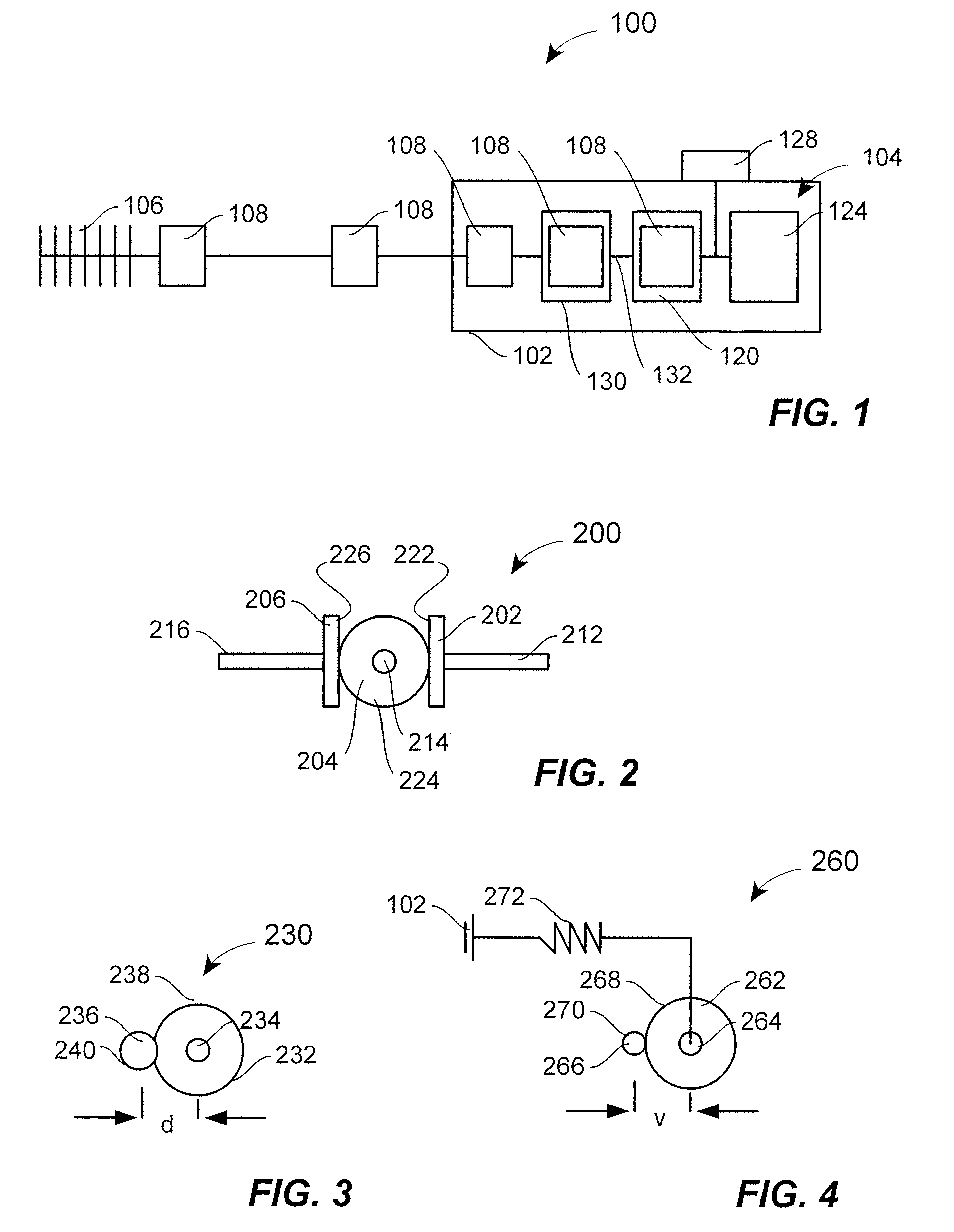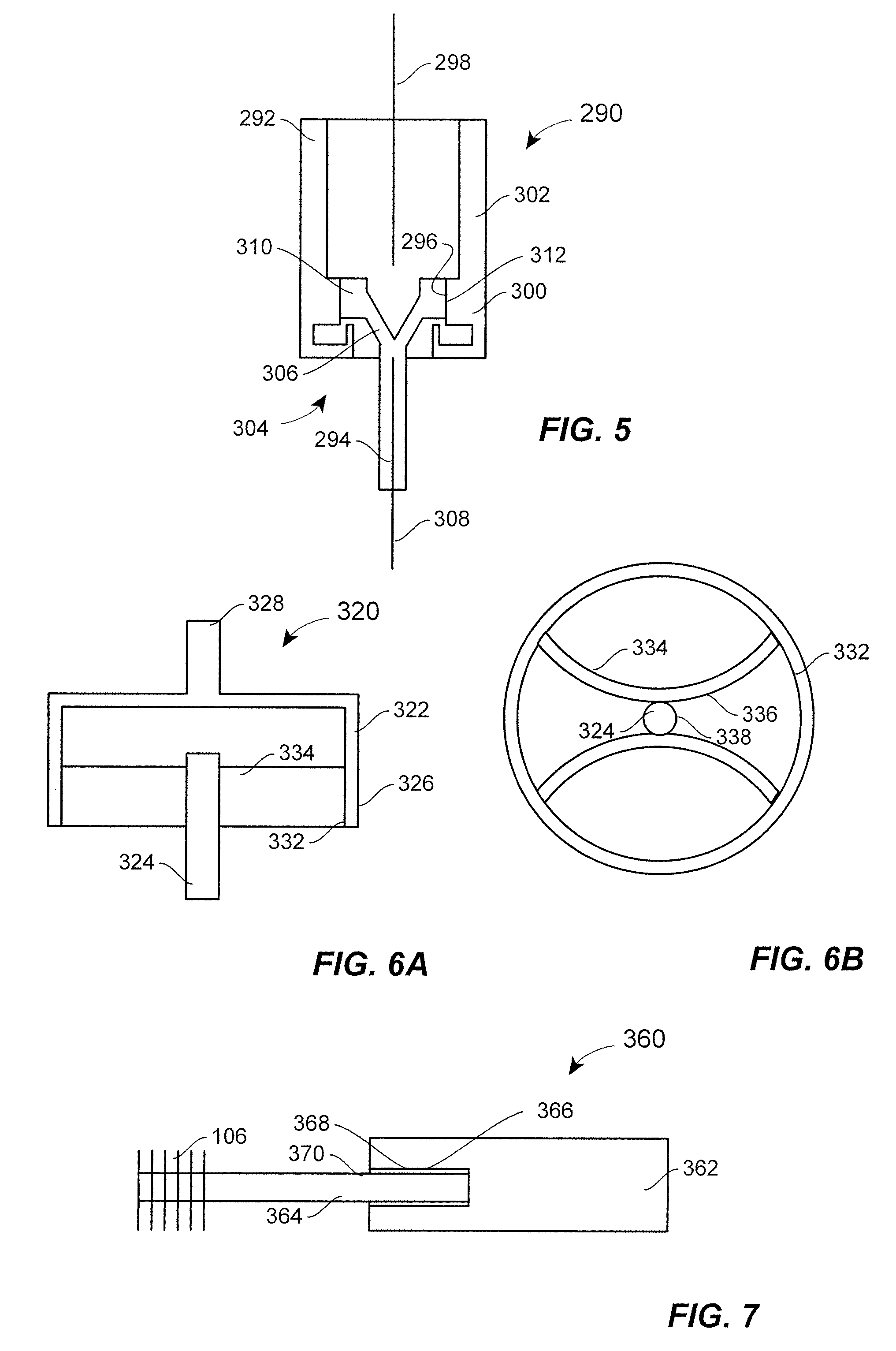Cosmetic Applicator with Torque Limiter
a technology of torque limiter and cosmetic applicator, which is applied in the direction of carpet cleaner, packaging goods type, packaged goods, etc., can solve the problem of reducing the time window for users to take corrective action
- Summary
- Abstract
- Description
- Claims
- Application Information
AI Technical Summary
Problems solved by technology
Method used
Image
Examples
tenth embodiment
[0101]FIGS. 11A and 11B illustrate slip coupling 465 including a first shaft 466, which may be coupled to the drive 102, and a second, hollow shaft 468, which may be coupled to the head 106. The first shaft 466 has coupled to it one or more legs 470. As illustrated, the legs 470 are coupled at a first end 472 by a hinge 474 to the first shaft 466, and have a second, free end 476. The legs 470 are biased using resilient members 478 (such as springs, for example) toward a first state, wherein the legs 470 are substantially parallel to the first shaft 466. However, as the first shaft 466 rotates, the legs 470 may move outward against the biasing force applied by the resilient members 478 to assume a second state, wherein the legs 470 are at an angle relative to the shaft 466. As illustrated in FIG. 11B, the legs 470 may be substantially at right angles to shaft 466 in the second state.
[0102] With the legs 470 in the second state, the free ends 476 of the legs 466 may abut an inner surf...
first embodiment
[0109] magnetic coupling 600 is illustrated in FIG. 14. According to this embodiment, a first magnet 602 may be coupled to a first shaft 604, which in turn may be coupled to the drive 104. The shaft 604 may have a receptacle 606 formed therein to accept an end 608 of a second shaft 610, which in turn may be coupled to the applicator head. A second magnet 612 (or a material having a medium to high magnetic permeability) may be coupled to the end 608 of the second shaft 614. The first and second shafts 604, 610 may be supported in such a fashion that a gap 616 is maintained between the two magnets 602, 612. The magnets 602, 612 are aligned with the axes of the respective shafts 604, 610. According to such an embodiment, the coupling formed is primarily (if not exclusively) magnetic.
second embodiment
[0110]FIGS. 15A and 15B illustrate a magnetic coupling 630, which is similar to the first coupling 600 in several regards, the differences best view relative to FIG. 14B. According to this embodiment, a first magnet 632 is coupled to a first shaft 634, and a second magnet 636 is coupled to a second shaft 638. Additionally, a gap 640 is maintained between opposing surfaces of the first and second magnets 632, 636. However, unlike the coupling 600, the first and second magnets 632, 636 are not aligned along an axis 642 of shafts 634, 638. Instead, as best seen in FIG. 14A, in a first, coupled state, the magnets 632, 636 are aligned at an offset position relative to the common axis 642. As a consequence, when a sufficient relative torque is applied to decouple the magnetic coupling 630, the magnets 632, 638 are spaced from each other (see dashed lines, for example) along axes that are parallel to each other.
PUM
 Login to View More
Login to View More Abstract
Description
Claims
Application Information
 Login to View More
Login to View More - R&D
- Intellectual Property
- Life Sciences
- Materials
- Tech Scout
- Unparalleled Data Quality
- Higher Quality Content
- 60% Fewer Hallucinations
Browse by: Latest US Patents, China's latest patents, Technical Efficacy Thesaurus, Application Domain, Technology Topic, Popular Technical Reports.
© 2025 PatSnap. All rights reserved.Legal|Privacy policy|Modern Slavery Act Transparency Statement|Sitemap|About US| Contact US: help@patsnap.com



